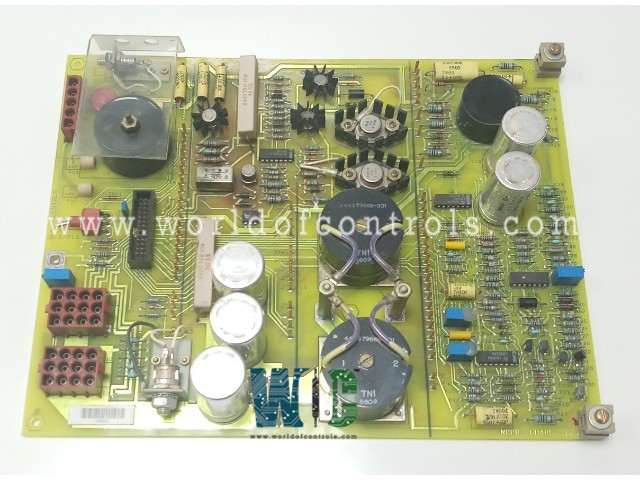
World Of Controls understands the criticality of your requirement and works towards reducing the lead time as much as possible.
DS3800NPPB1M1H - Negative Power Supply Board is available in stock which ships the same day.
DS3800NPPB1M1H - Negative Power Supply Board comes in UNUSED as well as REBUILT condition.
To avail our best deals for DS3800NPPB1M1H - Negative Power Supply Board, contact us and we will get back to you within 24 hours.
SPECIFICATION:
Part Number: DS3800NPPB1M1H
Manufacturer: General Electric
Series: Mark IV
Product Type: Negative Power Supply Board
Number of channels: 12
Operating temperature: -25 to 55 °C
Size: 8.24 cm high x 4.16 cm
Repair: 3-7 Day
Availability: In Stock
Weight: 2 lbs
Country of Origin: United States
FUNCTIONAL DESCRIPTION:
DS3800NPPB1M1H is a Negative Power Supply Board manufactured and designed by General Electric as part of the Mark IV Series used in GE Speedtronic Gas Turbine Control Systems. A negative power supply board in a turbine control system typically refers to a component that provides a source of negative voltage needed for various electronic circuits within the control system. This negative voltage is essential for powering certain types of operational amplifiers, analog-to-digital converters, or other components that require both positive and negative power supplies to operate effectively. The negative power supply board is responsible for generating and regulating this negative voltage to ensure the stable and reliable operation of the control system. It may incorporate voltage regulation circuitry, filtering components, and safety features to protect against voltage spikes or other electrical disturbances.
FEATURES:
WOC has the largest stock of GE Speedtronic control systems OEM replacement parts. We can also repair your faulty boards and supply unused and rebuilt boards backed up with a warranty. Our team of experts is available round the clock to support your OEM needs. Our team of experts at WOC is happy to assist you with any of your automation requirements. For pricing and availability on any parts and repairs, kindly get in touch with our team by phone or email.
What is a negative power supply board?
A negative power supply board is a component within a turbine control system that generates and regulates a negative voltage supply necessary for powering various electronic circuits and components.
Why is a negative power supply needed in a turbine control system?
Many electronic components, such as operational amplifiers and analog-to-digital converters, require both positive and negative power supplies to function properly. The negative power supply board ensures that these components receive the required negative voltage.
What features does a negative power supply board typically include?
Typical features include voltage regulation circuitry, filtering components for noise reduction, overvoltage and short-circuit protection, thermal management systems, and sometimes output monitoring capabilities.